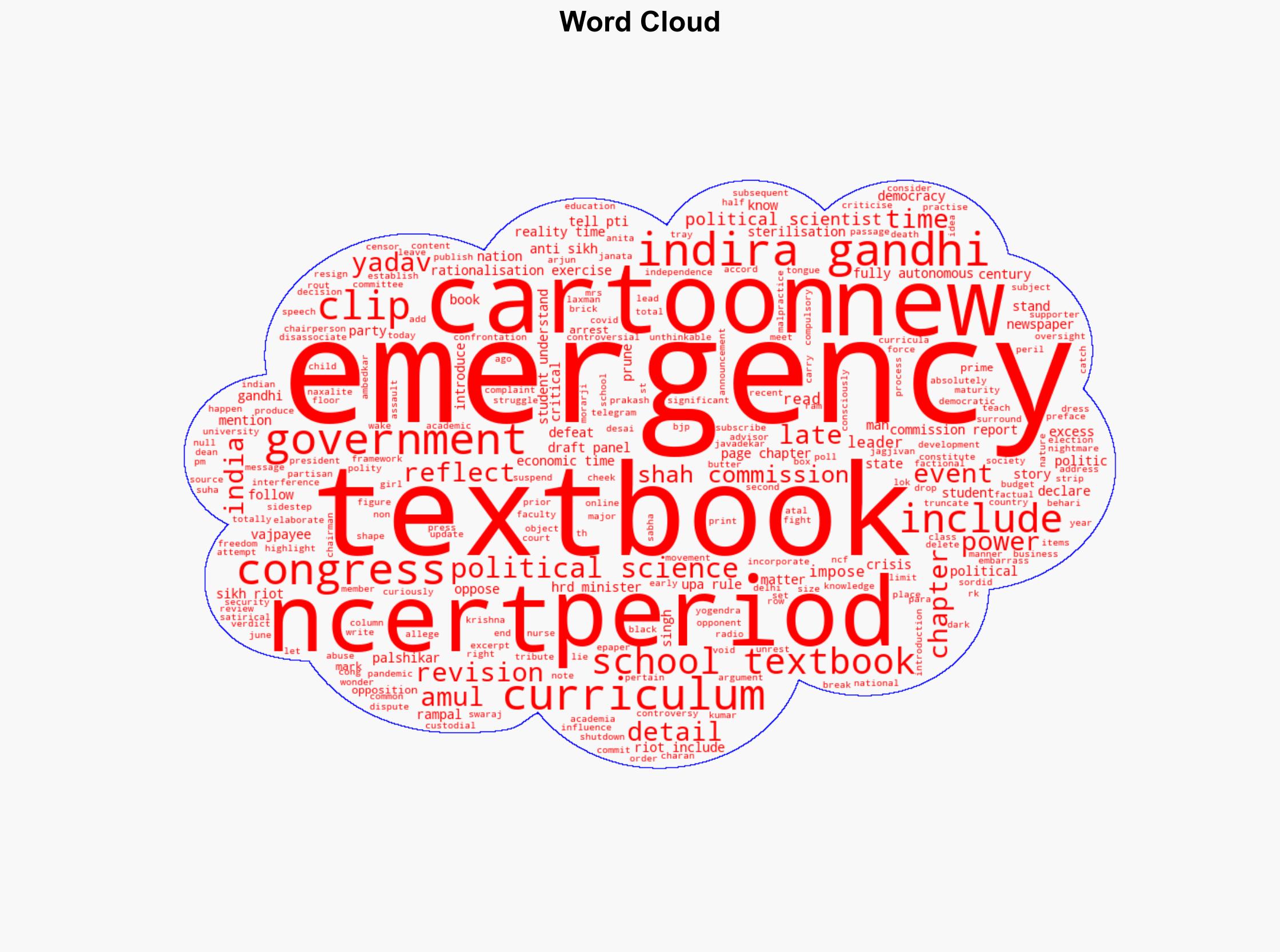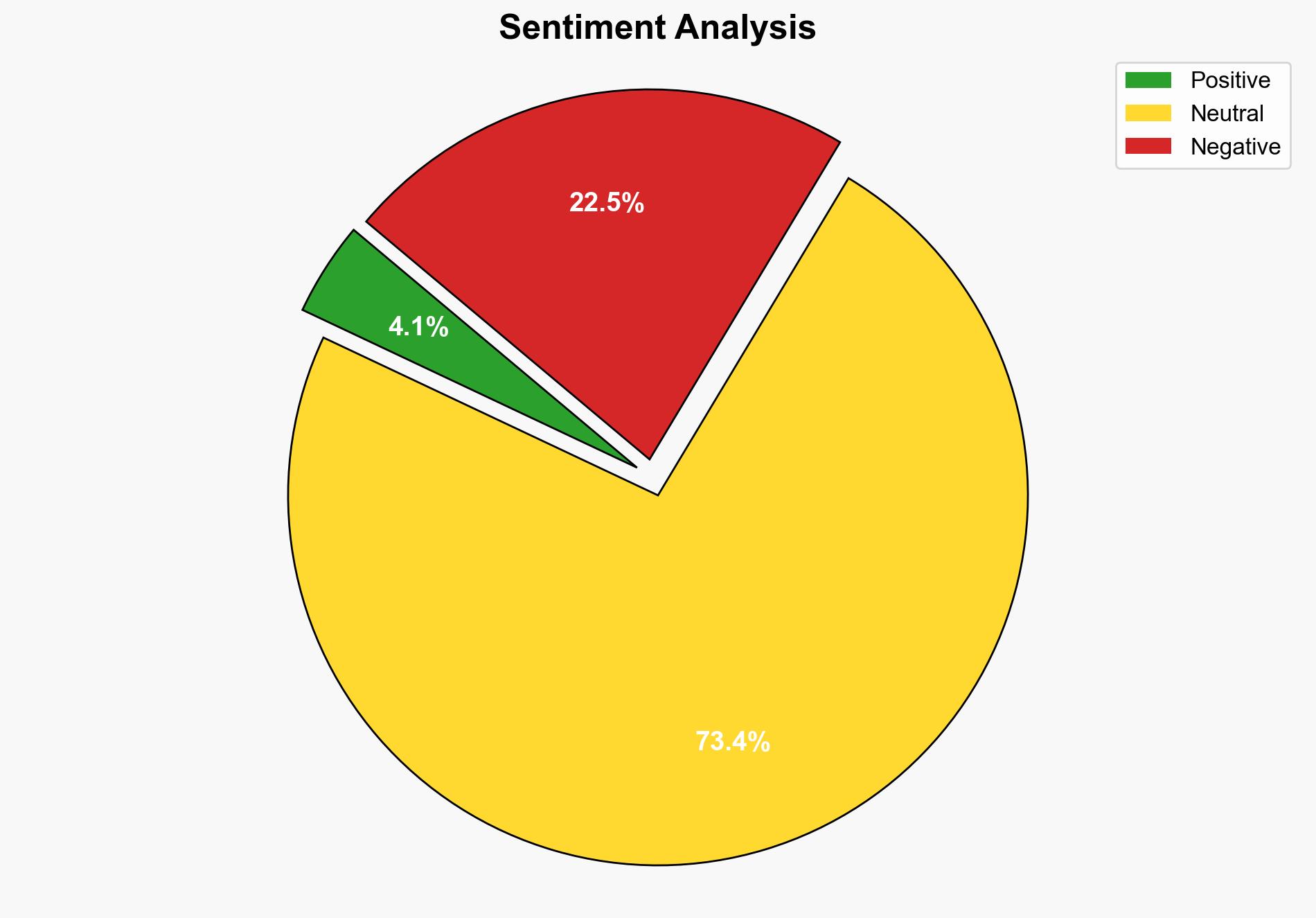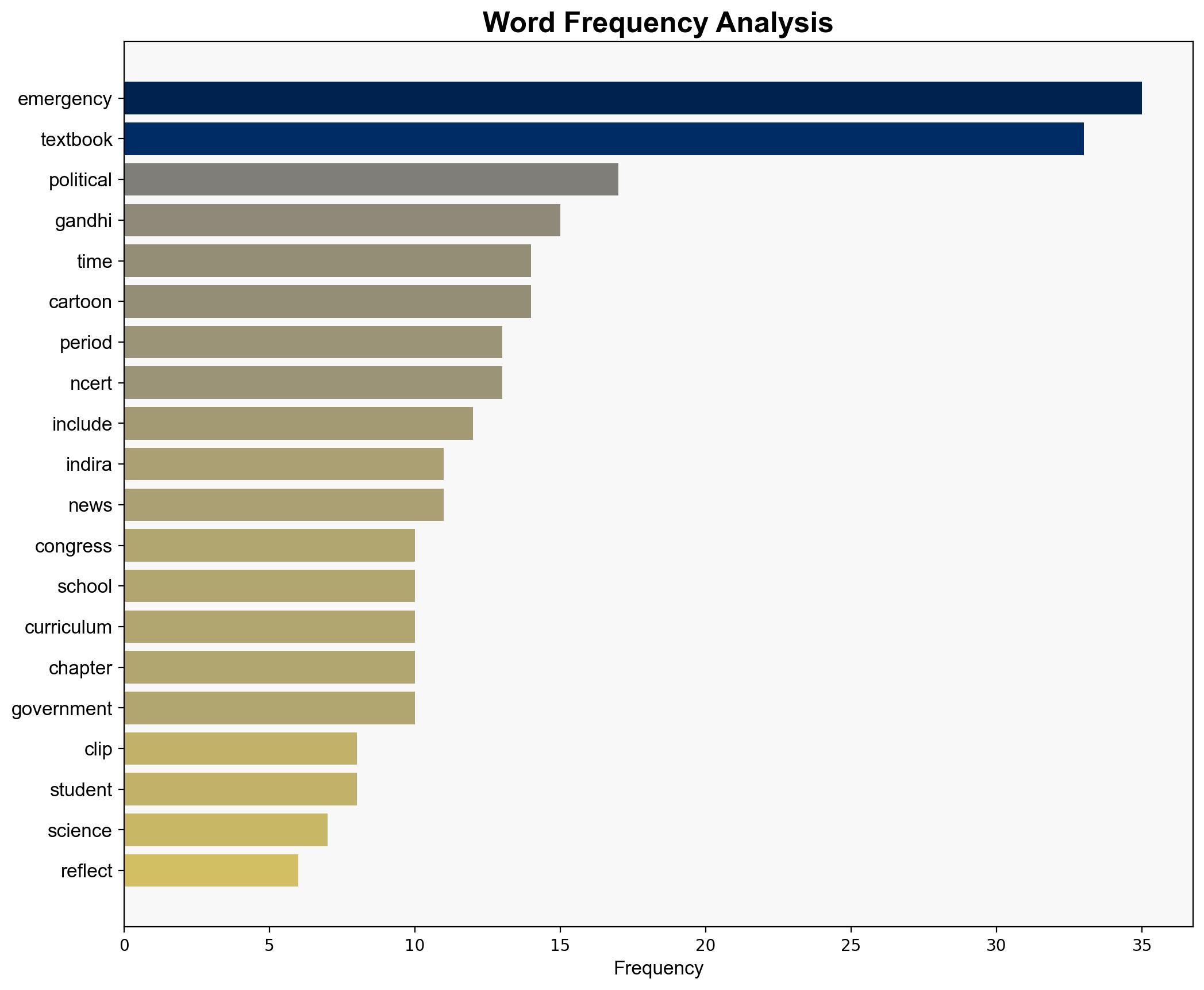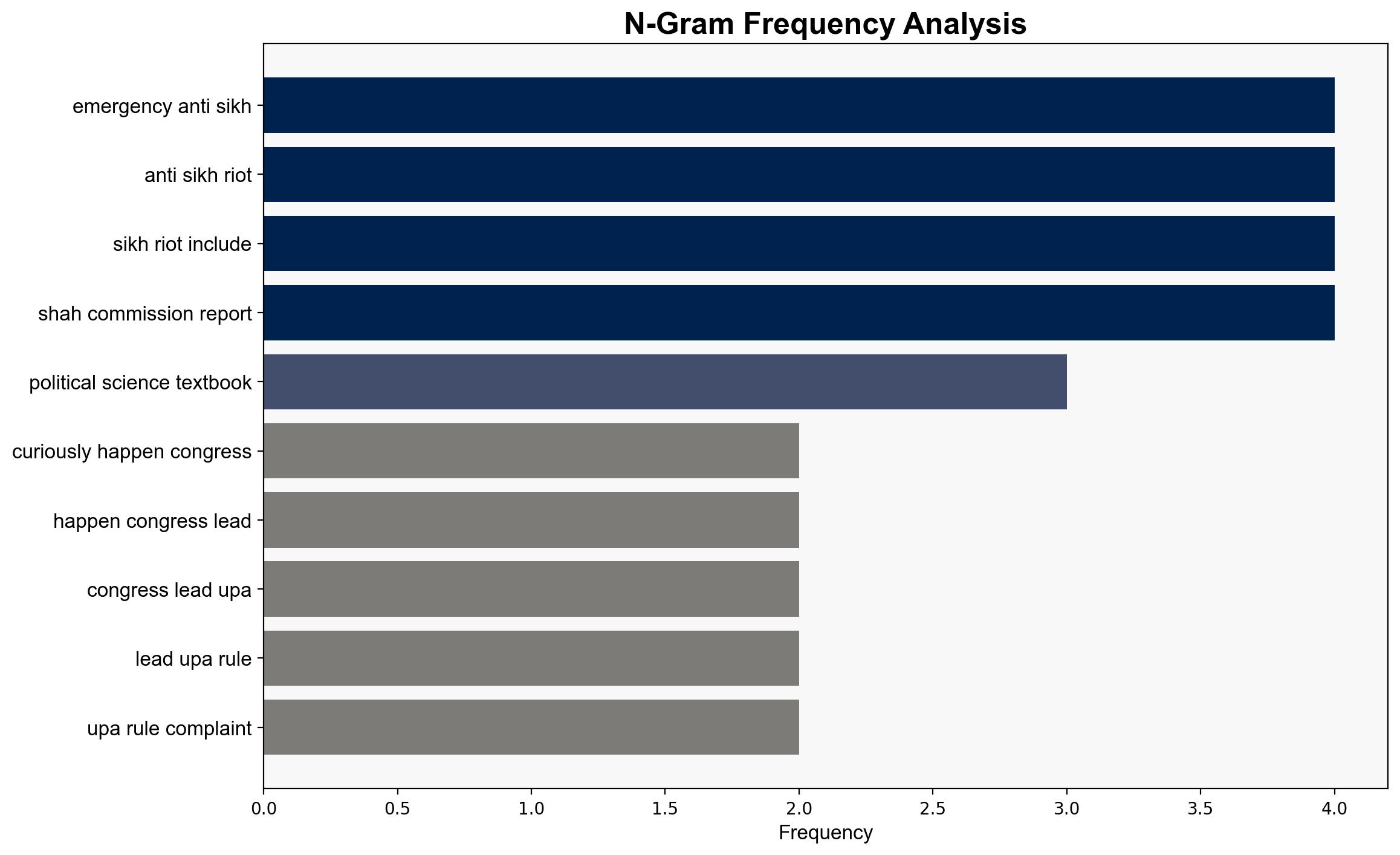Emergency made part of school syllabus during UPA rule 3 decades after imposition – The Times of India
Published on: 2025-06-24
Intelligence Report: Emergency made part of school syllabus during UPA rule 3 decades after imposition – The Times of India
1. BLUF (Bottom Line Up Front)
The inclusion of the Emergency period in school syllabi during the UPA rule marks a significant shift in educational content, reflecting on a controversial historical event. This move, occurring three decades after the Emergency’s imposition, suggests a strategic decision to educate students on a pivotal moment in India’s political history. Key findings indicate potential political motivations behind the curriculum changes, with implications for historical narrative control and political discourse.
2. Detailed Analysis
The following structured analytic techniques have been applied to ensure methodological consistency:
ACH 2.0
The decision to include the Emergency in textbooks likely aimed to address historical oversight and provide a comprehensive political education. However, it may also reflect an attempt to influence political narratives by highlighting past government excesses.
Indicators Development
Monitoring changes in educational content can serve as an indicator of shifting political priorities or attempts to shape public perception. This inclusion could signal a broader trend of revisiting historical narratives in educational materials.
Narrative Pattern Analysis
The narrative surrounding the Emergency’s inclusion in textbooks emphasizes transparency and historical accuracy. However, it also risks politicization, as differing interpretations of the period may influence public opinion and political alignment.
3. Implications and Strategic Risks
The inclusion of the Emergency in educational curricula could polarize political discourse, potentially leading to increased political tensions. It may also affect public perception of historical events, influencing future political engagement and policy-making. There is a risk of educational content being used as a tool for political influence, which could undermine academic autonomy and objectivity.
4. Recommendations and Outlook
- Encourage a balanced and non-partisan approach to historical education to mitigate political bias and promote critical thinking among students.
- Monitor educational content changes for potential political motivations and ensure transparency in curriculum development processes.
- Scenario-based projections: Best case – Enhanced historical understanding and critical discourse among students; Worst case – Increased political polarization and manipulation of educational content; Most likely – Gradual integration of diverse historical perspectives with ongoing debates on narrative control.
5. Key Individuals and Entities
Indira Gandhi, Krishna Kumar, Anita Rampal, Arjun Singh, Yogendra Yadav, Suha Palshikar
6. Thematic Tags
educational reform, political history, curriculum development, narrative control




